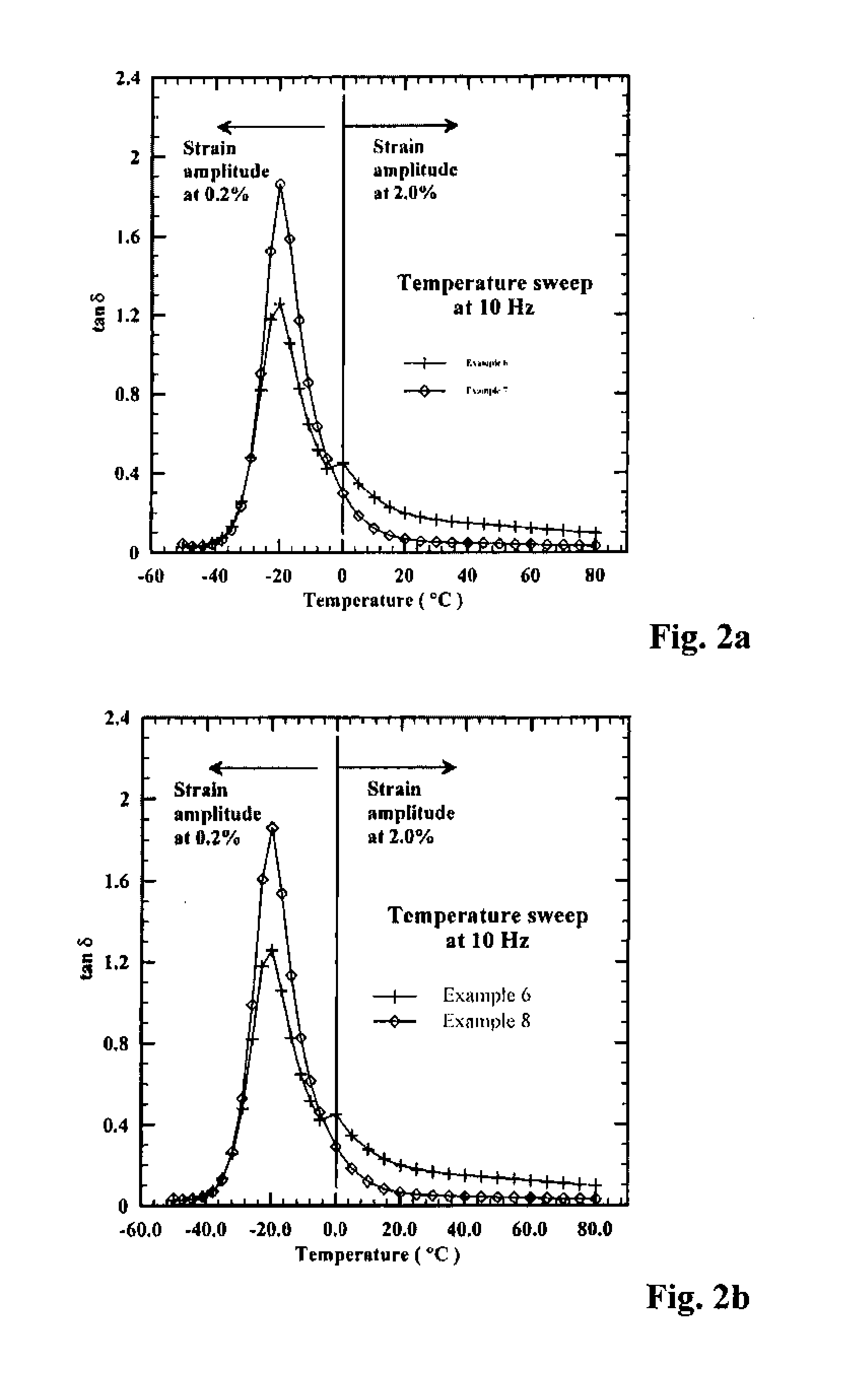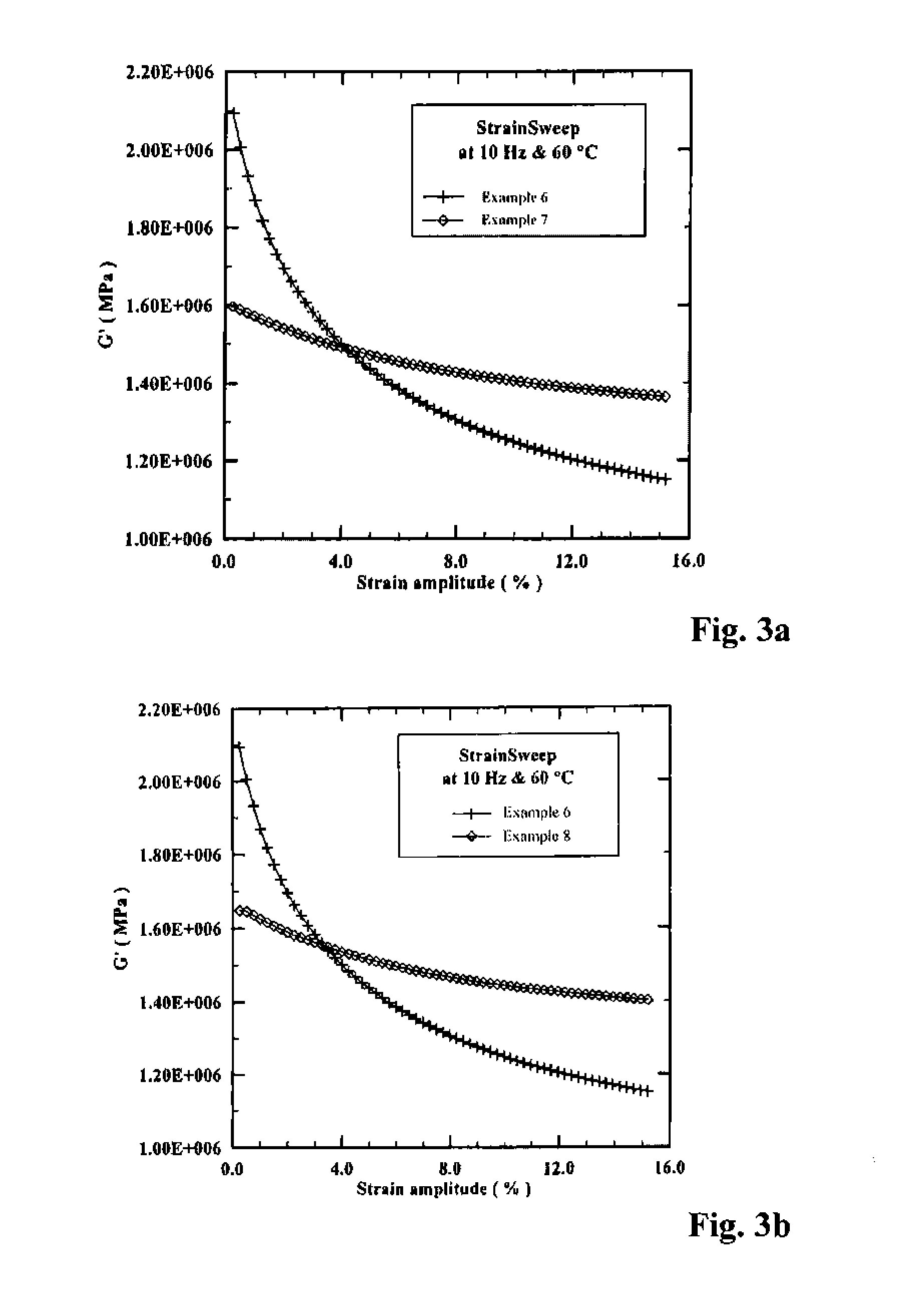Hydroxyaryl functionalized polymers
- Summary
- Abstract
- Description
- Claims
- Application Information
AI Technical Summary
Benefits of technology
Problems solved by technology
Method used
Image
Examples
Example
Example 1
Synthesis of 3,4-bis(tert-butyldimethylsilyloxy)benzophenone
[0151]To a dry flask under nitrogen was charged ˜6.0 g 3,4-dihydroxybenzophenone, ˜6.3 g triethylamine, ˜0.14 g 4-(dimethylamino)pyridine, and 30 mL DMF. A solution of ˜9.3 g tert-butyl(chloro)dimethylsilane in 30 mL DMF then was added in dropwise fashion.
[0152]The reaction mixture was stirred for ˜4 hours at room temperature before being poured into ˜100 mL hexane and ˜30 mL saturated NH4Cl solution. The organic phase was washed three times with 50 mL portions of water and dried with anhydrous MgSO4.
[0153]After solvent was removed, the residue was separated by a flash silica-gel column with hexane / ethyl acetate (85:15, v / v) as eluent. Approximately 11.5 g (93% yield) white solid was obtained. Proton and 13C NMR spectroscopic analysis confirmed the product as 3,4-bis(tert-butyldimethylsilyloxy)benzophenone (BTBDMSBP).
Example
Example 2
Synthesis of 3,4-bis(tert-butyldimethylsilyloxy)benzaldehyde
[0154]To a dry flask under nitrogen was charged ˜10.0 g 3,4-dihydroxybenzaldehyde, ˜16.1 g triethylamine, ˜0.35 g 4-(dimethylamino)pyridine, and 60 mL DMF. A solution of ˜24.0 g tert-butyl(chloro)dimethylsilane in 60 mL DMF then was added in dropwise fashion.
[0155]The reaction mixture was stirred for ˜4 hours at room temperature before being poured into ˜200 mL hexane and ˜100 mL saturated NH4Cl solution. The organic phase was washed three times with 100 mL portions of water and dried with anhydrous MgSO4.
[0156]After solvent was removed, the residue was separated by a flash silica-gel column with hexane / ethyl acetate (95:5, v / v) as eluent. Approximately 25.5 g (96% yield) white solid was obtained. Proton and 13C NMR spectroscopic analysis confirmed the product as 3,4-bis(tert-butyldimethylsilyloxy)benzaldehyde (BTBDMSBA).
Example
Examples 3-5
Styrene / butadiene Copolymers
[0157]To a N2-purged reactor equipped with a stirrer was added 1.39 kg hexane, 0.37 kg styrene solution, and 2.27 kg butadiene solution (21.6% by wt. in hexane). The reactor was charged with 3.19 mL n-butyllithium solution, followed by 1.13 mL of 2,2-bis(2′-tetrahydrofuryl)propane solution. The reactor jacket was heated to 50° C., and the polymerization was allowed to continue for ˜75 minutes. The polymer cement was cooled to room temperature before being quenched in isopropanol containing 2,6-di-tert-butyl-4-methylphenol and then drum dried. This is designated Example 3 below.
[0158]The foregoing polymerization was essentially repeated; however, prior to coagulation, 6.0 mL of a 0.83 M solution of BTBDMSBP (from Example 1) in hexane was added to the reactor, and the polymer cement was agitated for another ˜30 minutes at 50° C. before being allowed to cool to room temperature. The polymer cement was transferred to a N2-purged bottle, to which ˜...
PUM
| Property | Measurement | Unit |
|---|---|---|
| Digital information | aaaaa | aaaaa |
| Hydrolysable | aaaaa | aaaaa |
Abstract
Description
Claims
Application Information
 Login to view more
Login to view more - R&D Engineer
- R&D Manager
- IP Professional
- Industry Leading Data Capabilities
- Powerful AI technology
- Patent DNA Extraction
Browse by: Latest US Patents, China's latest patents, Technical Efficacy Thesaurus, Application Domain, Technology Topic.
© 2024 PatSnap. All rights reserved.Legal|Privacy policy|Modern Slavery Act Transparency Statement|Sitemap



